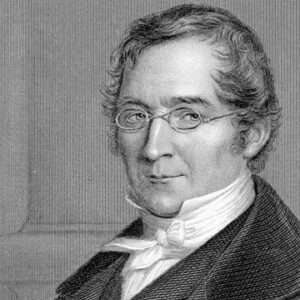Lussac, Joseph Louis Gay, was a French chemist and physicist who made significant contributions to applied chemistry. He was known for his groundbreaking research of the properties of cyanogen and iodine, as well as his pioneering discoveries into the behavior of gases. He had a privileged childhood as the son of a prominent lawyer, which was abruptly disrupted by the French Revolution of 1789, when his father lost much of his fortune. In the middle of the political instability, the Abbey of Bourdeix, which had been providing Joseph with private tutoring, fled the country, delaying his schooling. His father wanted him to be a lawyer at first, but the young lad had always been more interested in science. He was a bright student who was accepted into the École Polytechnique, a newly created institute where the state paid for students’ fees. Despite his family’s financial situation, he was able to obtain a good education as a result of this. He eventually rose to prominence as a renowned chemist and physicist, best known for his work on gas dynamics. He collaborated with other notable scientists like as Jean-Baptiste Biot, Alexander von Humboldt, and Louis Thenard during his career to produce significant scientific discoveries.
Childhood and Adolescence
Joseph Louis Gay Lussac, the eldest son of Antoine Gay and Leonarde Bourigner, was born on December 6, 1778, in Saint-Léonard-de-Noblat. His father served as a judge in Noblat Bridge and was a lawyer and prosecutor. Joseph was one of four children.
His family was well-off, and he grew up in a nice environment. However, the French Revolution radically altered the family’s fortunes. From 1793 to 1794, his father was caught as a suspect and imprisoned. The family also lost a lot of money.
Joseph’s study was first hampered by the revolution, but in 1797 he passed the competitive entrance examination for admission to the newly established Ecole Polytechnique, where the state paid for students’ fees. He became Claude Louis Berthollet’s protégé here and graduated in 1800.
Following his graduation, he enrolled in the Ecole Nationale des Ponts et Chaussées, a civil engineering school. He skipped college, though, to pursue his passion in chemistry.
Career of Joseph Louis Gay-Lussac
In 1801, Joseph Louis Gay Lussac started working as a research assistant for Claude Louis Berthollet, who was blown away by the young man’s ability. Berthollet had lately established a laboratory in his country house at Arcueil, just outside of Paris, and he was instrumental in his protégé’s professional growth.
He worked on capillarity experiments alongside prominent mathematician Pierre-Simon Laplace in order to explore short-range forces. In 1801–02, he also conducted study on the thermal expansion of gases. He found that all gases expand similarly over the temperature range of 0–100 °C (32–212 °F) in his studies using dry gases and pure mercury.
In 1802, he became A. F. Fourcroy’s demonstrator at the École Polytechnique, and in 1809, he was promoted to professor of chemistry. From 1808 to 1832, he was a professor of physics at the Sorbonne.
In 1805–06, he went on a European journey with Alexander von Humboldt, a scientific adventurer. They learned during this journey that the composition of the atmosphere does not change as pressure decreases (increasing altitude). He also discovered that water is formed when hydrogen and oxygen meet in a 2:1 volume ratio.
In 1808 he discovered the law of mixing volumes of gases. He also looked at the reactions of hydrogen chloride and ammonia, which combine to form ammonium chloride in equal parts.
He was named joint editor of the ‘Annales de chimie et de physique’ in 1816, a position he shared with François Arago. This was a powerful position that provided a significant portion of his income.
In 1818, he was recruited to the government’s gunpowder commission, and in 1829, he was named director of the Paris Mint’s assay department, where he developed an accurate procedure for assaying silver. He made a lot of money in these positions as well. Accepting these jobs, however, drew harsh criticism from his colleagues, who accused him of pursuing financial gain rather than a life dedicated to pure science.
He was also an inventor, responsible for the invention of the portable barometer, steam injector pump, and air thermometer. In 1824, he invented an improved burette with a side arm, and he coined the phrases “pipette” and “burette.”
Major Projects of Joseph Louis Gay-Lussac
He is best known for inventing the Gay-law, Lussac’s which is used to refer to each of the two properties of gases interactions. The word is also used to refer to his volume combining law. The first law deals with volumes before and after a chemical reaction, while the second deals with the relationship between pressure and temperature for a gas sample.
Achievements & Awards
In 1821, he was elected to the Royal Swedish Academy of Sciences as a foreign member.
In 1839, King Louis Philippe created Joseph Louis Gay Lussac a peer.
His name is one of the 72 names of French scientists, engineers, and mathematicians who have had their names engraved on the Eiffel Tower in honor of their accomplishments.
Personal History and Legacy
In the year 1809, Joseph Louis Gay Lussac married Geneviève-Marie-Joseph Rojot. Theirs was a loving marriage with five children that lasted four decades.
During his latter days, he was in poor condition and died on May 9, 1850, in Paris, France.
Estimated Net Worth
The estimated net worth of Joseph Louis Gay-Lussac is unknnown.


